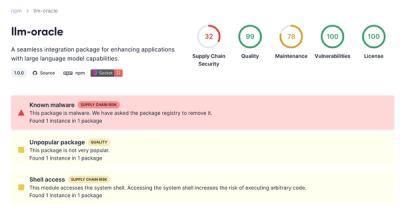Forma 36 React Components
A React component library for Contentful, powered by Storybook.
Forma 36 Homepage
Forma 36 Storybook
Table of contents
Library Usage
Install package from NPM
yarn add @contentful/forma-36-react-components
Or for NPM
npm i @contentful/forma-36-react-components
Import desired component into your project
import { Input } from '@contentful/forma-36-react-components';
Import styles
import '@contentful/forma-36-react-components/dist/styles.css';
NOTE: If a component is still in alpha state:
import { AlphaComponent } from '@contentful/forma-36-react-components/dist/alpha';
Development
Switch to the correct version of Node (using NVM)
nvm use
Install dependencies
For local development run yarn from the root of this repo to install all dependencies and build all packages.
Run Storybook
Storybook is a UI development environment we are using to power our component library. Using Storybook allows us to work on components in isolation.
yarn storybook
Using Storybook requires you to wrap your component in a story. Look in the src/components directory for an example .stories.js file. Storybook has been configured to automatically include any files with the .stories.js file extension.
Storybook is setup using its own Webpack configuration file located at tools/.storybook/webpack.config.js.
Example component directory structure
A component's directory should resemble the following:
YourComponent
├── index.js // A file for exporting your component
├── YourComponent.js // Your React component
├── YourComponent.css // Component styles
├── YourComponent.stories.js // Storybook for the component
└── YourComponent.test.js. // Component tests
Styling
We are using postcss-preset-env for styling our components. Using postcss-preset-env allows us to use the latest CSS syntax without having to wait for browser support. tools/postcss.config.js is used for adding plugins and configuration.
Component principles
We follow a number of principles when creating our components:
- A component is responsible for only its internal spacing
We follow the principle that a component should only be responsible for its own internal spacing - never external spacing. This means that we're flexible in where our components can be used without having to override margins.
- Use descriptive PropTypes
We recommend the following naming convention for PropTypes to make them as clear as possible:
- Number - use a prefix or suffix to imply that the prop accepts a number. E.g.
numItems, itemCount, itemIndex - Boolean - use the prefix 'is'/'can'/'has'. E.g.
isVisible, canExpand, hasImage - Array - use a plural noun. E.g.
items - Object - use a noun. E.g.
item - Node - use the suffix 'Node'. E.g.
containerNode - Element - use the suffix 'Element'. E.g.
triggerElement - Event handler functions - use the prefix 'on'. E.g.
onOpen, onClick
Adding documentation for component
We would like to make sure that every component contains a README file with recommendations and guidelines. Using yarn add-readme it will generate a template README file for you for the component that you specify. Follow steps in the CLI to create new README.
Make sure that your documentation for the component contains following parts:
- A short summary of the component.
- Variations/types - try to provide the overview of the components variants.
- Example of usage - try to add couple of examples, that includes import
- Content recommendations - notes about best practices when it comes to the content used in the component, like message or title
- Best practices - try to describe in couple of points when to use the component
- Accessibility - If possible, we strongly recommend providing accessibility guidelines.
Testing
We are using Jest and Testing Library to test our components.
Tests are kept next to their components and use the .test.js file extension.
Run tests
yarn test
It is recommended to run tests in development with the optional --watch flag.
yarn test --watch
Building
We are using a combination of Webpack and Babel to create builds of our component library. We use Webpack with the tools/webpack.production.config.js config to build a stylesheet including all CSS used for our components using the ExtractTextPlugin. Babel is used for transpiling our React components into CommonJS modules. Babel and Webpack both output the build to the dist directory.
Create a build of the library
yarn build
Commits
This project uses the Angular JS Commit Message Conventions, via semantic-release. See the semantic-release Default Commit Message Format section for more details.
You can commit the changes by running
yarn commit
Alpha components
We provide a number of alpha components which are unsupported and subject to breaking changes without warning. In short - use alpha components at your own risk.
Alpha components are provided outside of the main component library bundle and can be used as follows:
import { MyAlphaComponent } from '@contentful/forma-36-react-components/dist/alpha';



